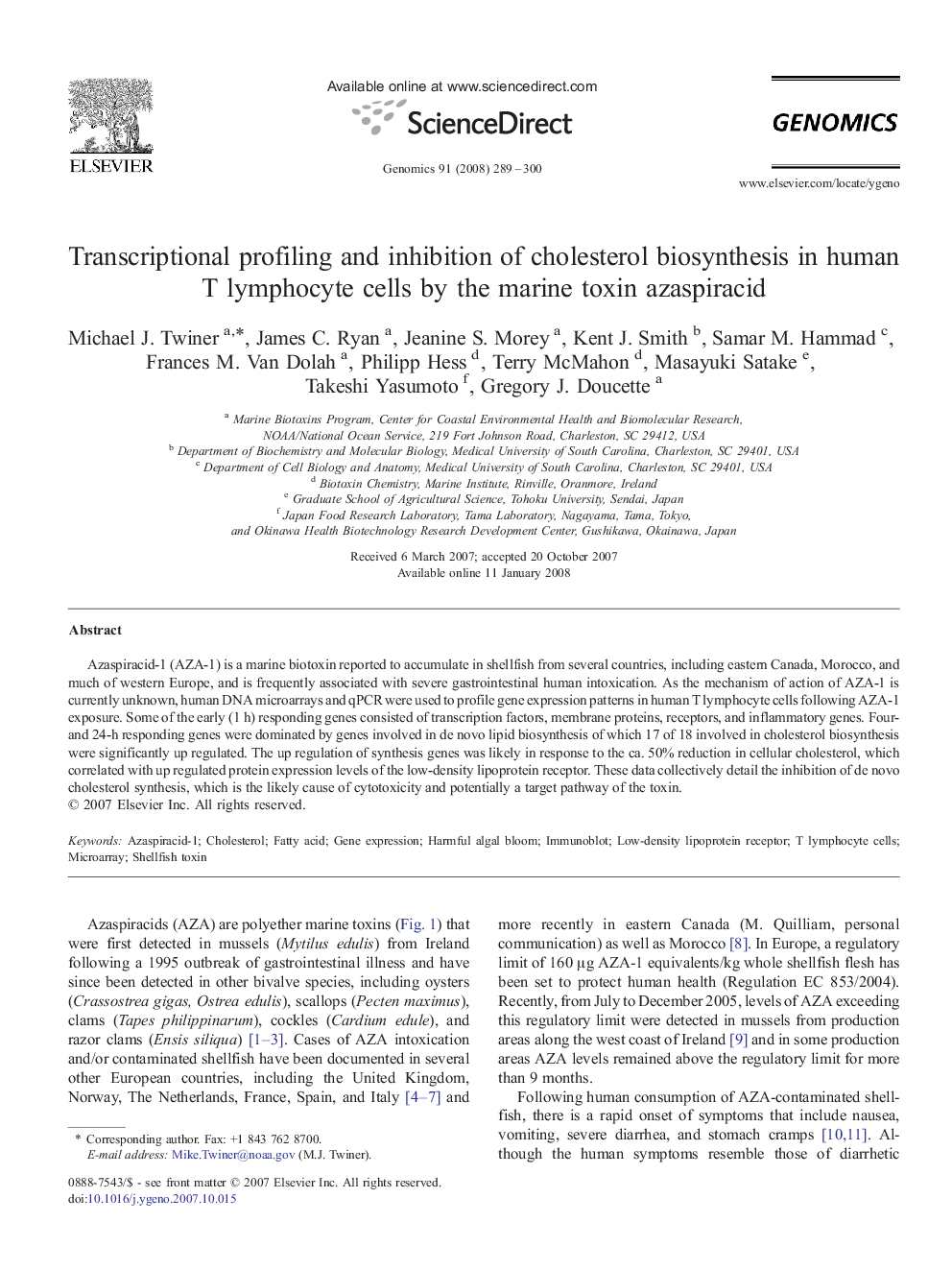| Article ID | Journal | Published Year | Pages | File Type |
|---|---|---|---|---|
| 2820949 | Genomics | 2008 | 12 Pages |
Azaspiracid-1 (AZA-1) is a marine biotoxin reported to accumulate in shellfish from several countries, including eastern Canada, Morocco, and much of western Europe, and is frequently associated with severe gastrointestinal human intoxication. As the mechanism of action of AZA-1 is currently unknown, human DNA microarrays and qPCR were used to profile gene expression patterns in human T lymphocyte cells following AZA-1 exposure. Some of the early (1 h) responding genes consisted of transcription factors, membrane proteins, receptors, and inflammatory genes. Four- and 24-h responding genes were dominated by genes involved in de novo lipid biosynthesis of which 17 of 18 involved in cholesterol biosynthesis were significantly up regulated. The up regulation of synthesis genes was likely in response to the ca. 50% reduction in cellular cholesterol, which correlated with up regulated protein expression levels of the low-density lipoprotein receptor. These data collectively detail the inhibition of de novo cholesterol synthesis, which is the likely cause of cytotoxicity and potentially a target pathway of the toxin.
